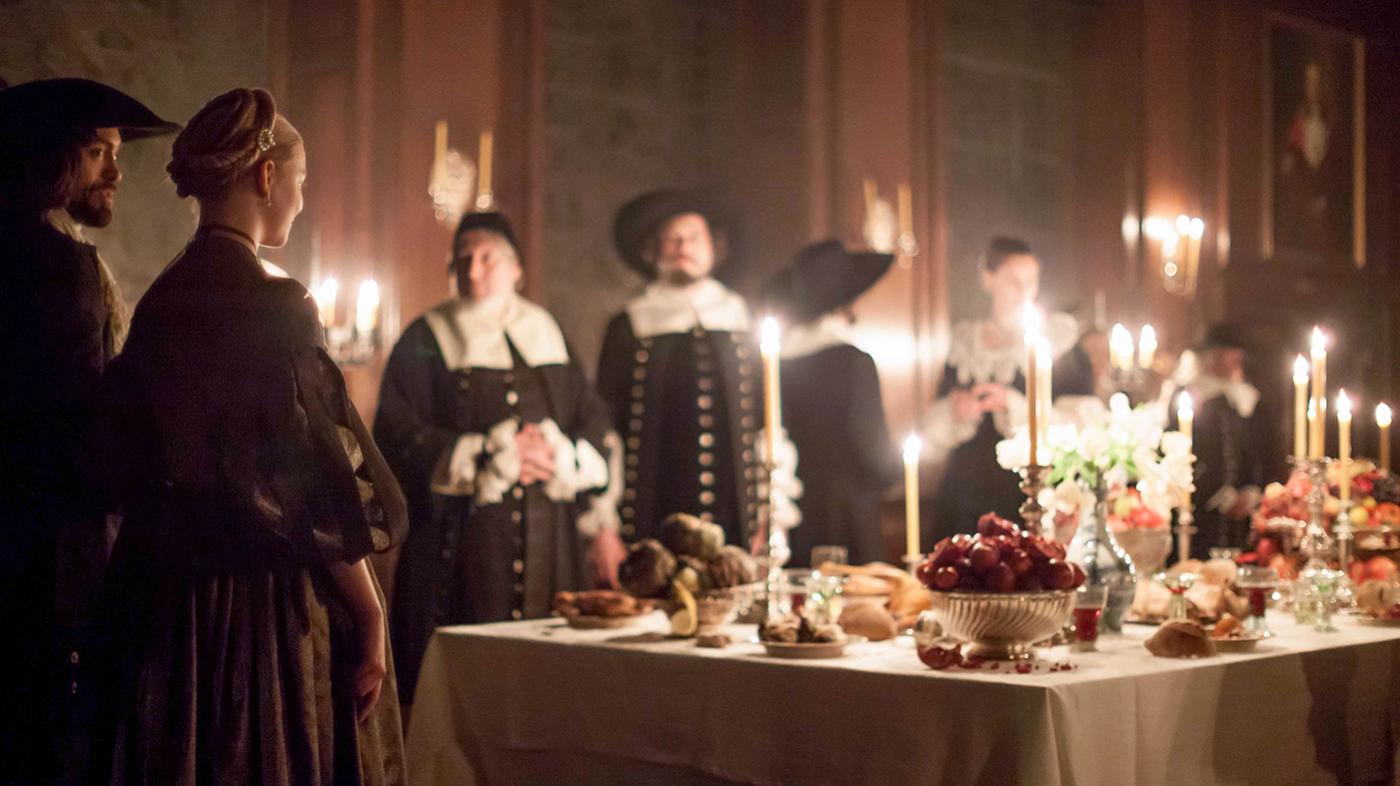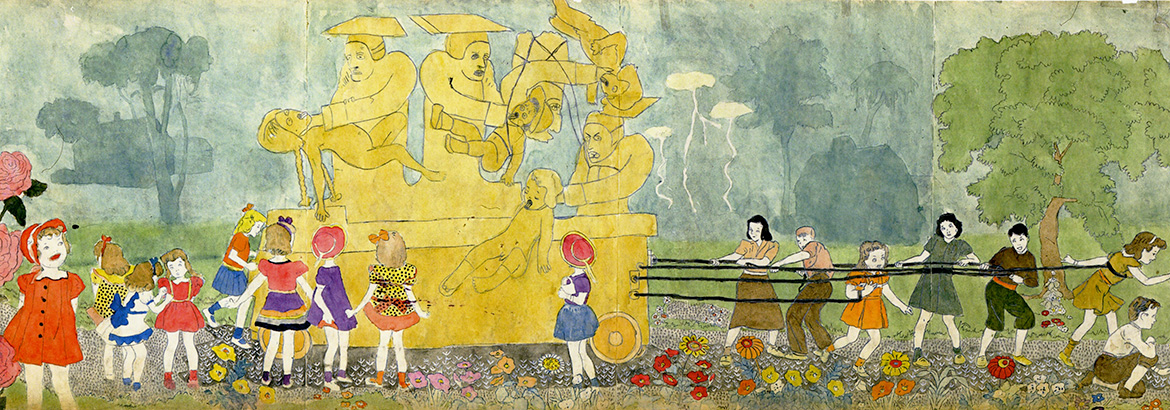
The Miniaturistairs Sundays at 8:00 pm and is available to stream.
It is 1686. Amsterdam is the wealthiest city in the world, a center of global finance and trade. Merchants like Johannes Brandt have become fabulously wealthy from buying and selling exotic goods such as sugar and spices from Indonesia, India, and the Caribbean. So Brandt can afford to spend an exorbitant sum on a wedding gift for his new bride, Petronella: a finely crafted miniature reproduction of his home for her to enjoy.
Nella is a bit puzzled by this gift, but then she’s young and from the country. Her marriage to Brandt and the accompanying access to his money have saved her struggling family from debt. And the miniature home is just one of several oddities in her new life, not as significant as some of the others.
Most concerning to Nella is her lack of intimacy with Johannes. He seems to always be busy or traveling on business; he’s not even at home when she first arrives. The new couple have separate bedrooms, and they don’t share a kiss until they’ve been married almost two weeks. Despite Nella’s repeated hints that she’d like to consummate the marriage, the one time she does embrace Johannes he starts away when she shows a desire to do more than kiss.
Is this icy distance a result of Johannes’s unusual relationship with his devout sister Marin? She’s a strict housekeeper who values humility and thrift, dressing in nun-like black garments despite her family’s wealth. She immediately takes a dislike to Nella, banishing to the kitchen the parakeet the girl brings to her new home and offering Nella herring when she asks for marzipan.
 Johannes's pious sister Marin takes an immediate dislike to her brother's new bride. Photo: The Forge/Laurence Cendrowicz for BBC and MASTERPIECE
Johannes's pious sister Marin takes an immediate dislike to her brother's new bride. Photo: The Forge/Laurence Cendrowicz for BBC and MASTERPIECE
It’s clear Marin doesn’t want Nella there. Johannes has ordered dresses made for Nella, but Marin purposefully gave measurements a size too large. However, Marin seems to see Nella as a necessity – she insists that the windows stay uncovered, so that Amsterdam knows Johannes has a bride, and that the house has nothing to hide.
Despite her pious aversion to luxury, Marin gives Nella a list of craftspeople and tells her that she can commission some items for her miniature house. Nella and the house maid, Cornelia, visit the shop of a miniaturist and leave a letter with requests when they find it shut up and seemingly empty. Within a few days the commission is fulfilled: a package for Nella is dropped off by a dashing young man whom Johannes seems upset to see.
Inside the package is a note reading, “Every woman is the architect of her own fortune,” and the items Nella requested: a lute, a birdcage, and a tray of marzipan. But there’s more, too: Johannes’s dog, a cradle, and a chair that is the exact replica of one in Nella’s room. Unnerved by the miniaturist’s apparent familiarity with the house, Nella quickly draws her curtains and dashes off a note ending all business with the craftsperson.
But another package soon arrives, with more knickknacks and two dolls, of Marin and Johannes. Nella places them inside the miniature house, turning Marin on her head.
When Nella, Marin, Cornelia, and Johannes’s manservant Otto then go to church without Johannes, Marin begins to have a headache. Regardless, when she spots a pair of Johannes’s clients who are selling a huge amount of valuable sugar through Johannes, she invites them to dinner. Nella has already met Agnes and Frans Meermans, at a ball hosted by the silversmith guild that she attended with Johannes – the only time the new couple has spent any substantive time together so far. Both the Meermans and Johannes stand to make a fortune from the sale of the sugar, which everyone tastes at dinner and finds exquisite.
 Nella has entered a household full of secrets that even the servants seem to be in on. Photo: The Forge/Laurence Cendrowicz for BBC and MASTERPIECE
Nella has entered a household full of secrets that even the servants seem to be in on. Photo: The Forge/Laurence Cendrowicz for BBC and MASTERPIECE
Despite the eeriness of her miniature house, Nella has begun to take more of an interest in it. When she opens a tiny chest in the replica of Johannes’s room, she finds a pair of keys. Intrigued, she goes to the same chest in the real house and finds the same thing. She pockets the keys.
But when Otto – who was freed from slavery by Johannes; mutterings at church condemn him as a “savage” – discovers the Marin and Johannes dolls, he warns Nella not to buy any more miniatures. His job is to protect the house and the people in it, and “We stand or fall together.”
Nella only becomes more intrigued by the miniatures, and discovers that the Marin doll’s plain smock is secretly lined with luxuriant fur. Sneaking to Marin’s room, she finds that the miniature once again reflects reality. She moves further into Marin’s chambers and begins to read a love letter, but is caught and chased away by Marin before she finishes.
On edge from her confrontation, she looks out the window and sees Johannes leaving the house, despite the late hour. Learning that he has still not returned in the morning and that Marin is also gone, she insists on going to find him against Cornelia’s warnings that he’s busy at his office. But Johannes’s office is empty. Nella searches the attached warehouse and decides to try one of the pilfered keys on a locked door. Opening it, she hears moans of pleasure and creeps towards their source. In another room she sees Johannes naked and ecstatic. But he’s not with Marin, as Nella feared. He’s with a man.
So that’s why he wouldn’t touch her.






























